Spanning from the expansive Danube Delta to the iconic wooden and fortified churches, Romania boasts eight exceptional UNESCO World Heritage Sites that capture the essence of its rich history.
Among these, the fortified churches built in the 14th and 15th centuries stand out for their gothic style and military and religious architectural significance, founded by German craftsmen and merchants to serve a strategic and commercial role. To learn about all of the others, read on!
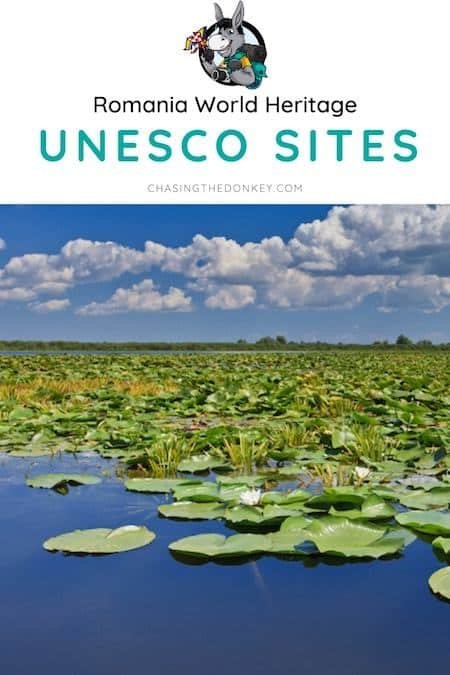 If the Balkans are the crossroads between Europe and the Middle East, Romania is a crossroads within a crossroads. This is where Southern, Central, and Eastern Europe meet.
If the Balkans are the crossroads between Europe and the Middle East, Romania is a crossroads within a crossroads. This is where Southern, Central, and Eastern Europe meet.
Romania is an exceptionally diverse country bordered by the Black Sea, Ukraine, Serbia, Moldova, and Hungary and crossed by the towering Carpathian Mountains.
Skip Ahead To My Advice Here!
Explore The UNESCO Sites In Romania
This diversity is showcased beautifully in the eight Romania UNESCO World Heritage Sites.
You’ll find sites protected by UNESCO heritage in Romania all over the country, from the inland mountains to the Black Sea coast, near its far northern border and in its most southwestern corner.
They include all major Romanian characteristics and features, such as the Danube River and ancient beech forests, historic cities, Romanian heritage, and numerous churches.
1. Historic Center Of Sighișoara
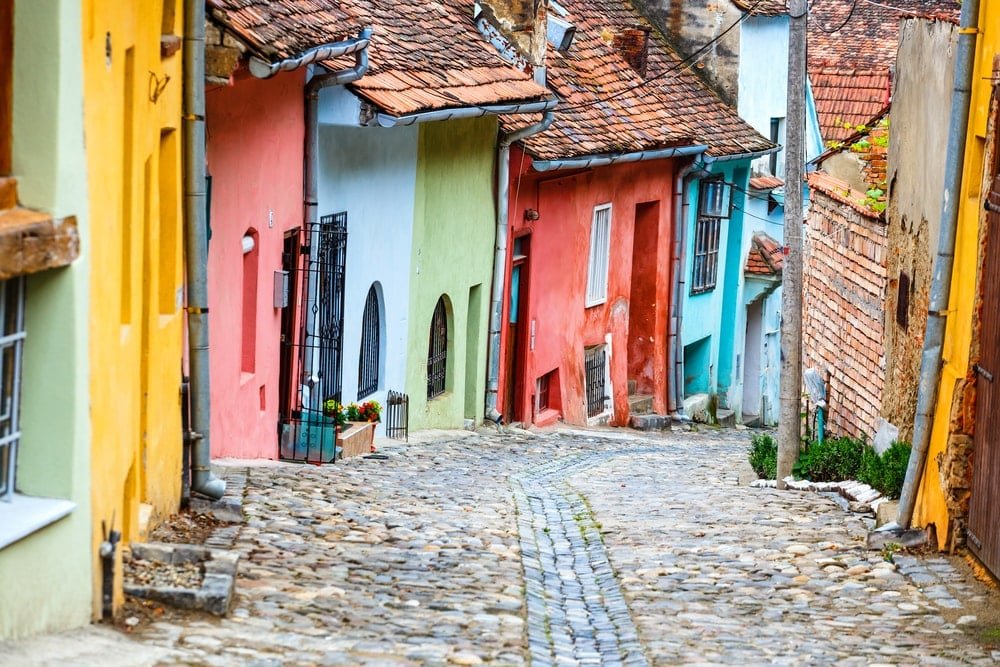
This gorgeous fortified medieval town (one of Europe’s many), Sighișoara, is one of the top attractions in Romania. Home to no more than 30,000 people, it’s in the famous region of Transylvania. Sighișoara is the birthplace of Vlad the Impaler, the person Bram Stoker based his famous Dracula novel on.
There’s more to Sighișoara and Transylvania than fake vampirical stories, though. More than 800 years old, the town is part of the historic Saxon region, a major cultural heritage center of Transylvanian Saxons. It’s this rich Saxon history that made UNESCO designate Sighișoara as World Heritage in 1999.
Although not all that big, Sighișoara has several remarkable sights; significant examples are its fortified town walls, several defensive towers, a handful of churches, and more than 150 buildings at least 300 years old. The latter include the Sighișoara City Hall, the Venetian House, the Stag House, and Vlad Dracul’s House (the father of Vlad III the Impaler).
2. Villages With Fortified Churches In Transylvania
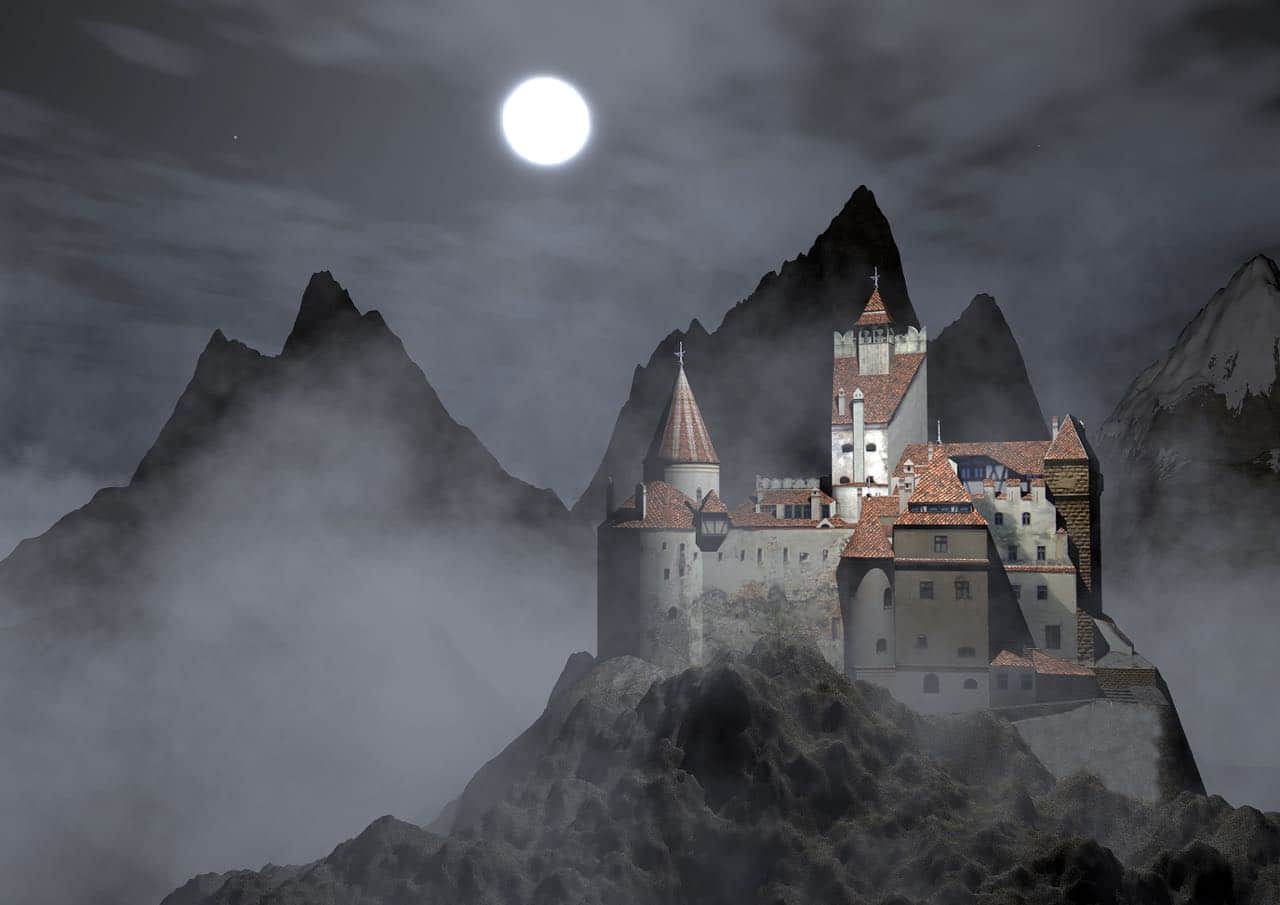
In the heart of Romania, in southeastern Transylvania, you’ll find seven historic villages renowned for their remarkable fortified churches. This area is home to the world’s largest concentration of well-preserved fortified churches dating from the 13th to the 16th centuries. On top of that, the variety in architectural styles of these churches is astounding.
They are literally dozens upon dozens of these churches, located in seven different villages. Founded by the Transylvanian Saxons, they represented a unique land-use system with its own specific settlement patterns and centered on family farmsteads.
While the larger towns in the region, such as Sighișoara above, were entirely fortified with town walls and defensive towers, the people living in smaller settlements built fortifications around their churches.
The Romania UNESCO World Heritage Site Villages with Fortified Churches in Transylvania includes the following seven villages:
- Biertan
- Dârjiu
- Saschiz
- Valea Viilor
- Câlnic
- Prejmer
- Viscri
Brands We Use And Trust
3. Monastery Of Horezu
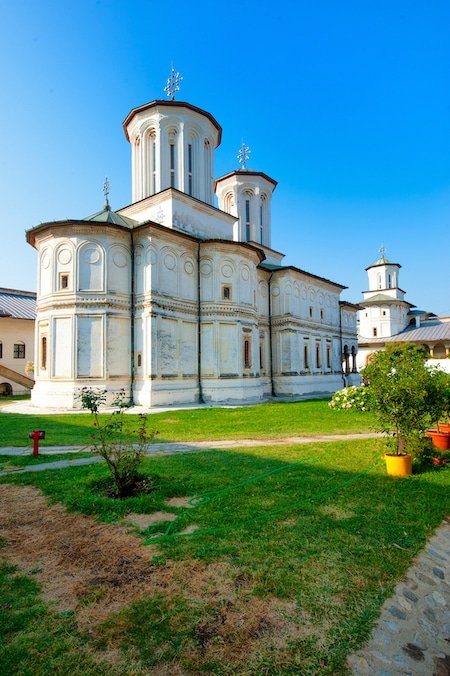
Located in Romania’s Wallachia region, the Horezu Monastery dates from 1690. That’s when Prince Constantine Brancovan founded the monastery, a stunning architectural masterpiece.
This impressive structure is now widely regarded as one of the finest examples of so-called “Brancovan” architecture, which can be considered the only original Romanian architectural style. It symbolizes the way of thinking of a ruler who put art and culture above everything else in a time when major European powers were warring non-stop.
UNESCO added it to the World Heritage list because of its “architectural purity and balance, the richness of its sculptural detail, the treatment of its religious compositions, its votive portraits and its painted decorative works.” It’s a description that speaks volumes as to the monastery’s unique beauty and cultural significance.
4. Dacian Fortresses Of The Orăștie Mountains
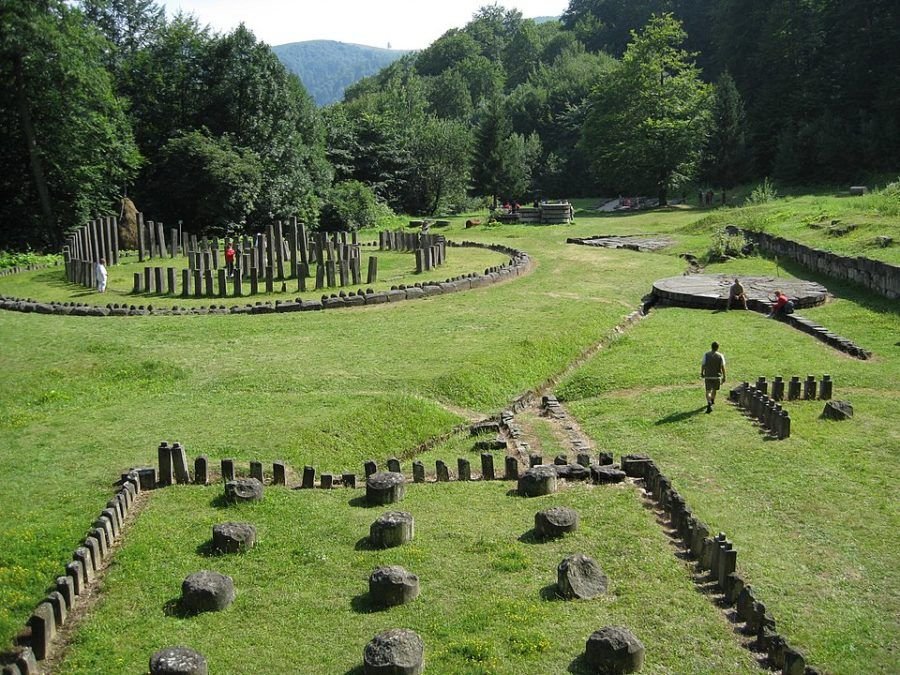
The Dacian Fortresses of the Orăștie Mountains are the oldest of the six cultural UNESCO World Heritage Sites in Romania. They date from the 1st century BC to the 1st century AD. Built by the Dacians to protect them against Rome’s growing power, these six defensive structures feature an extraordinary mix of religious and military architectural styles, both from the late Iron Age and the Classical world.
Although conquered by the Romans in the 2nd century, they were the Dacian Kingdom’s very heart for many decades. Now wonderfully well-preserved, all six sites offer a unique insight into this ancient civilization’s innovative and resilient nature.
The six Dacian Fortresses of the Orăștie Mountains lie pretty close to one another in the mountainous region of southwest-central Romania. These are the six individual sites:
- Sarmizegetusa Regia
- Bănița
- Piatra Roşie
- Costeşti-Cetăţuie
- Costeşti-Blidaru
- Căpâlna
5. Danube Delta
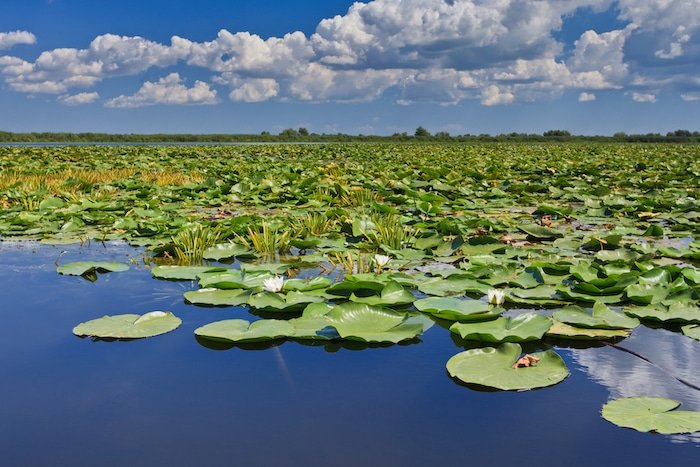
Considered one of Romania’s Seven Natural Wonders, the Danube Delta is a top tourist attraction for nature lovers. It is Europe’s newest patch of land, a natural biosphere formed by the Danube River before it flows into the Black Sea.
As the second-longest river in Europe, the Danube originates in the Black Forest in Germany, flowing in a more or less southeasterly direction before ending up in the Black Sea. From the Black Forest to the Black Sea, it meanders through no fewer than ten different countries.
It’s Europe’s second-largest river delta and one of the best-preserved. This vast collection of distributaries, lagoons, wetlands, marshes, and lakes is three times bigger than Greater London and is a critical habitat for over 3,500 animal species (particularly birds) and 1,700 plant species.
Think of it as a vast outdoor natural museum you can visit from a boat!
This is a fantastic destination if you’re keen on taking Romanian landscape pictures. Besides the rich wildlife, photographers will be impressed by the natural landscapes infused with sunrise light (the Delta faces the East).
The Danube Delta is one of the two natural UNESCO World Heritage Sites in Romania, arguably the country’s greatest natural treasure. In addition to being UNESCO World Heritage in Romania, the Danube Delta is also a UNESCO Biosphere Reserve.
Due to its importance as a natural habitat, travelers should visit responsibly.
The best time to visit is from April to October. Spend at least 2-3 days exploring, and consider hiring a locally licensed guide. Navigating its canals and knowing the best spots for wildlife watching require extensive on-the-ground knowledge.
6. Churches Of Moldavia
Constructed between the late-1400’s and late-1500’s, the eight Churches of Moldavia are in the far northern corner of Romania, near the border with Ukraine. These historic churches are unique in more than one way.
Besides their beautiful architectural design, they boast remarkable exterior paintings. Stunning frescoes and murals, masterpieces of Byzantine art, cover their external walls and all facades. They’re not just wall decoration, though. They depict complete cycles of religious stories and themes. Additionally, the elegance, colors, and composition of these murals are in total harmony with these churches’ peaceful natural surroundings.
If you’re a fan of art, architecture, culture, and/or history, this is one of the most fascinating Romanian UNESCO World Heritage Sites you can visit. The eight UNESCO-protected Churches of Moldavia are:
- Church of the Assumption of the Virgin of the former Monastery in Humor
- Church of the Annunciation of the Monastery in Vatra Moldoviței
- Church of the Beheading of St. John the Baptist in Arbore
- Church of St. Nicholas and the Catholicon of the Monastery in Probota
- Church of the Holy Rood in Pătrăuți
- Church of the Resurrection of the Monastery in Suceviţa
- Church of St. George of the former Monastery in Voronet
- Church of St. George in Suceava
7. Wooden Churches Of Maramures

In addition to the fortified Transylvanian churches and mural-covered churches in Moldavia, there’s a third UNESCO World Heritage Site in Romania that protects churches. This one is about an entirely different type of church, though. Situated in northern Transylvania, the wooden churches of Maramureș are a collection of nearly 100 historic churches in various architectural styles and from different historical periods. Eight of them are protected as UNESCO World Heritage in Romania.
Although not often visited by international tourists, Maramureș is still one of Romania’s most well-known regions. This mountainous region in the north of the country is famous for its centuries-old customs and traditions, traditional rural lifestyle, and colorful clothing. People still live here the way they did hundreds of years ago, making Maramureș essentially a real-life history museum. It’s one of the very few surviving regions that are actually still 100% authentic in Europe. Exploring it is one of the best things to do in Romania.
The eight Wooden Churches of Maramureș are exceptional for their tall and narrow design, shingle cover, slim clock towers, and use of timber instead of stone. While there are dozens of these wooden churches in the Maramureș region, the following eight are designated as World Heritage by UNESCO in Romania:
- Church of the Presentation of the Virgin in the Temple in Bârsana
- Church of St. Nicholas in Budești
- Church of the Holy Parascheva in Desești
- Church of the Nativity of the Virgin in Ieud
- Church of the Archangels Michael and Gabriel in Plopiș
- Church of the Holy Parascheva in Poienile Izei
- Church of the Holy Archangels in Rogoz
- Church of the Archangels Michael and Gabriel in Șurdești
Move This Adventure To Your Inbox & Get An Instant Freebie

No spam. Unsubscribe at any time.
8. Ancient And Primeval Beech Forests Of The Carpathians And Other Regions Of Europe
The Ancient and Primeval Beech Forests Site is the only of all Romania UNESCO World Heritage Sites spread out across other countries. This site extends over twelve different European countries, including several other UNESCO World Heritage Sites in the Balkans.
After the last Ice Age ended, the European beech spread across the entire continent from a small number of isolated areas in the Pyrenees, Carpathians, and the Alps, among other mountain ranges. Taken only a few millennia, it’s an unparalleled continent-wide expansion by a plant species, a testimony to the beeches’ tolerance and adaptability.
Romania, as a heavily forested and mountainous country, has no fewer than nine different locations where the European beech is protected by UNESCO. This is where European beeches are protected by UNESCO in Romania:
- Lotru Mountains
- Țibleș Mountains
- Șinca Secular Forest
- Slătioara Secular Forest
- Cozia Massif
- Domogled-Valea Cernei
- Cheile Nerei-Beușnița
- Izvoarele Nerei
- Strimbu Băiuț
Have you ever visited any of these UNESCO World Heritage sites in Romania or in the Balkan Penninuslar? If not, which one will you start with?

